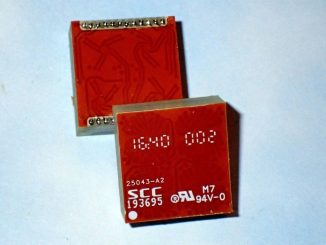Cobham Technical Services has extended the multiphysics capabilities of the Opera-3D finite element software for electromagnetic design with a new solver that can be used to analyze natural vibration modes. The tool is expected to prove particularly useful for electrical machine developers, who can employ it to investigate and minimize forces that might cause oscillations close to the natural frequencies of the equipment and thereby avoid excessive vibration or collisions between rotating and stationary parts.

By capturing such mechanical vibration in conjunction with electromagnetic modeling, and thermal performance if required, the integrated 3D (three-dimensional) tool suite can greatly reduce the complexity and timescales of design projects.
One of the key benefits of this capability is a further reduction in the need to create physical prototypes to explore the behavior of a proposed design concept. With the greater understanding of new designs that more thorough simulation brings, it can be possible to reduce the real-world prototyping phase to a few iterations. This can take months out of design cycles – along with the associated high costs.
“Finite element simulation is the most practical tool for exploring design concepts and validating device performance. Adoption from the outset of the design process can stimulate innovation and lead to designs which are right first time,” said Jeremy Howard-Knight of Cobham Technical Services. “With engineering skills at a premium, design automation using computer modeling is an extremely effective investment that companies can make to ensure successful products and a continuing flow of design ideas.”
The latest version of the software extends the fundamental performance advantage of Opera for many common design engineering applications. Mechanical stress and vibration is an important consideration in the design of coils and windings in transformers, motors, generators, actuators, large electromagnets and superconducting magnets. For example, the mechanical integrity of the stator end windings of a generator subject to a short-circuit condition, or the ability of a superconducting magnet’s coils to withstand the mechanical forces generated during a quench, are both critical design requirements.
The new modal solver, known as STRESS/EV, finds a user-specified number of eigenvalues within a specified frequency range and calculates the eigenvectors of each mode. It works in conjunction with the static stress analysis capability of Opera, which calculates the deformation, stresses and strains of a body which is subject to external and internal forces. The forces calculated from electromagnetic fields can be used as input to the stress analysis.
STRESS/EV accommodates isotropic, orthotropic and fully anisotropic materials, the properties of which can be specified as a constant or an expression. The program uses the Young’s modulus, Poisson’s ratio and shear modulus of the material, together with its elasticity matrix if it is fully anisotropic.



